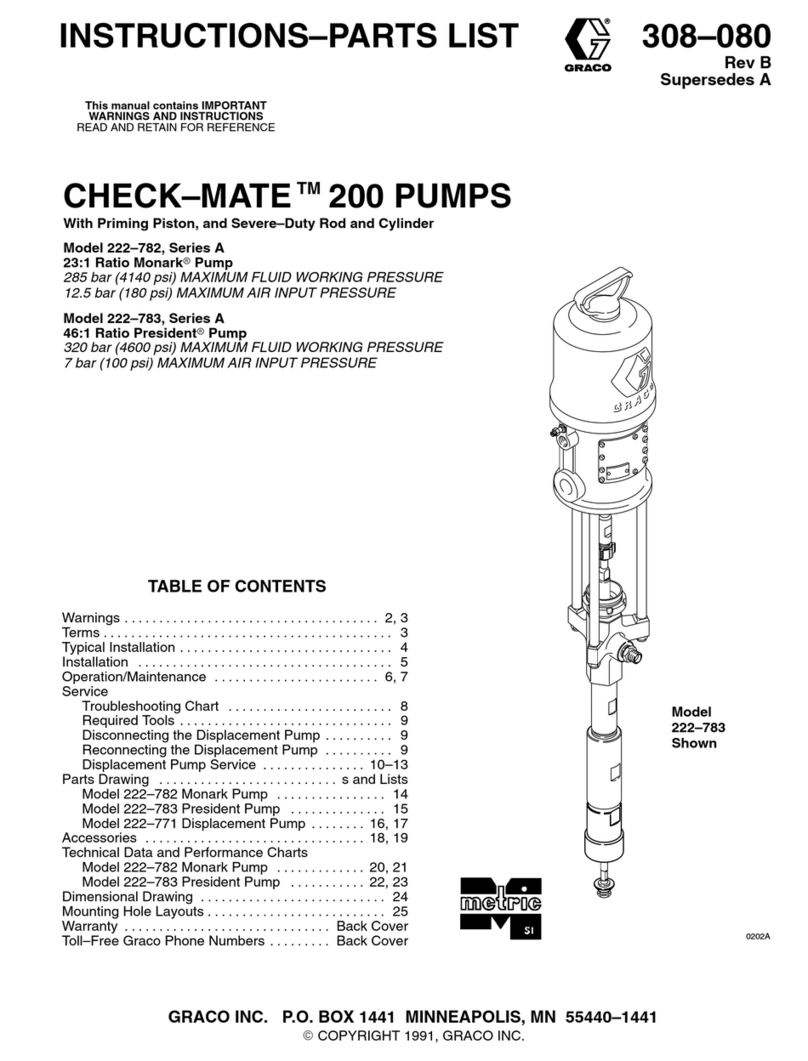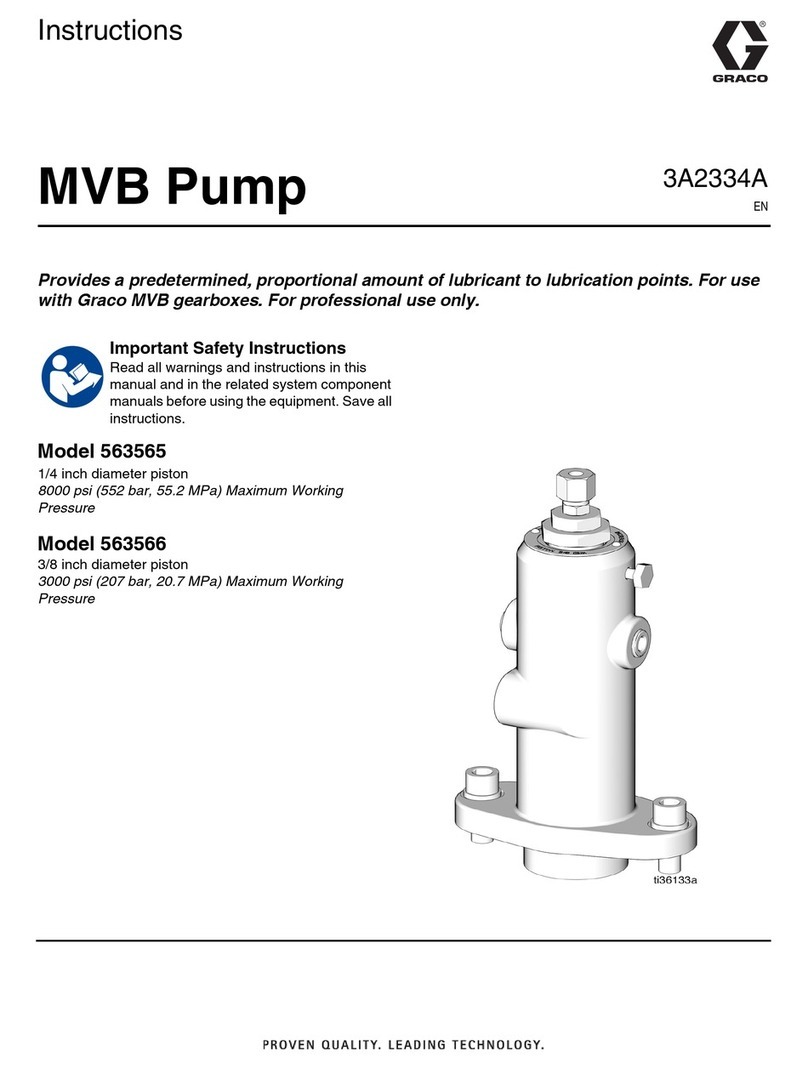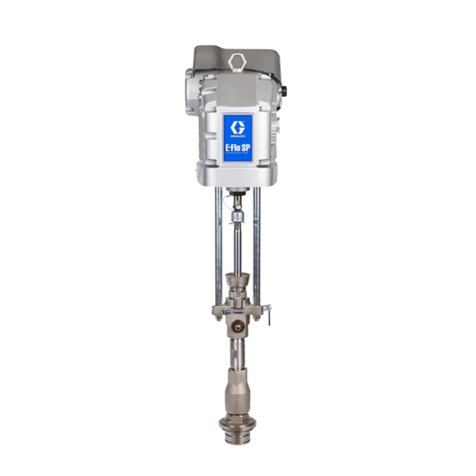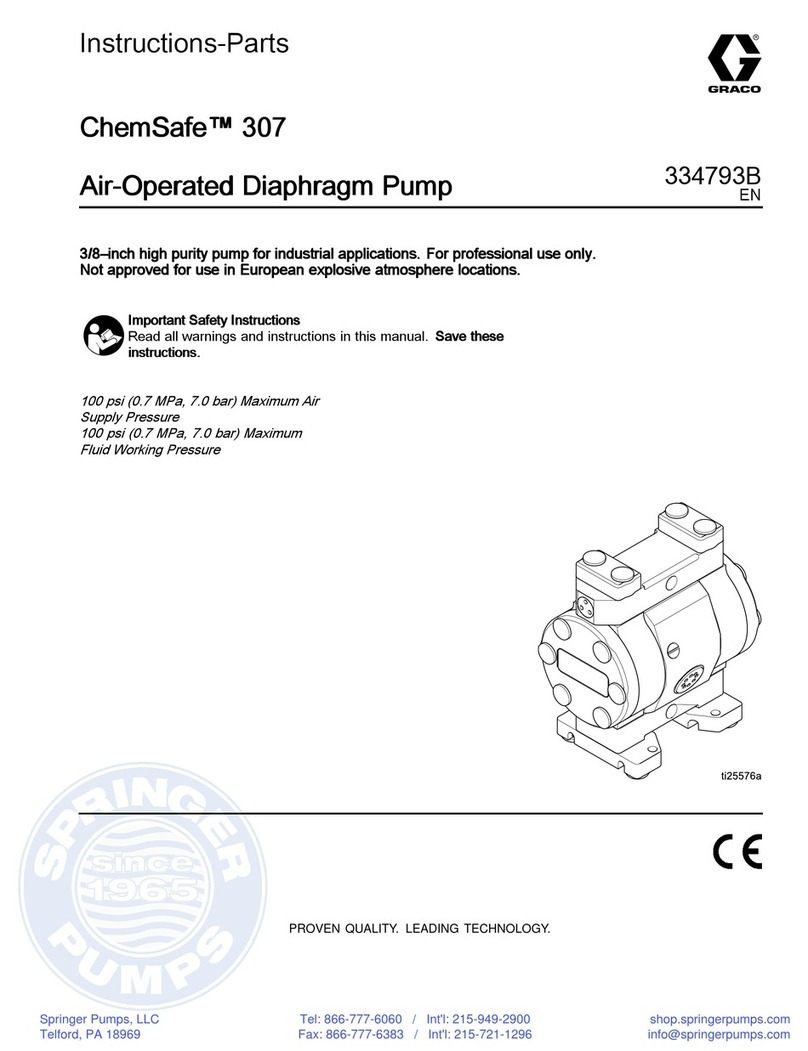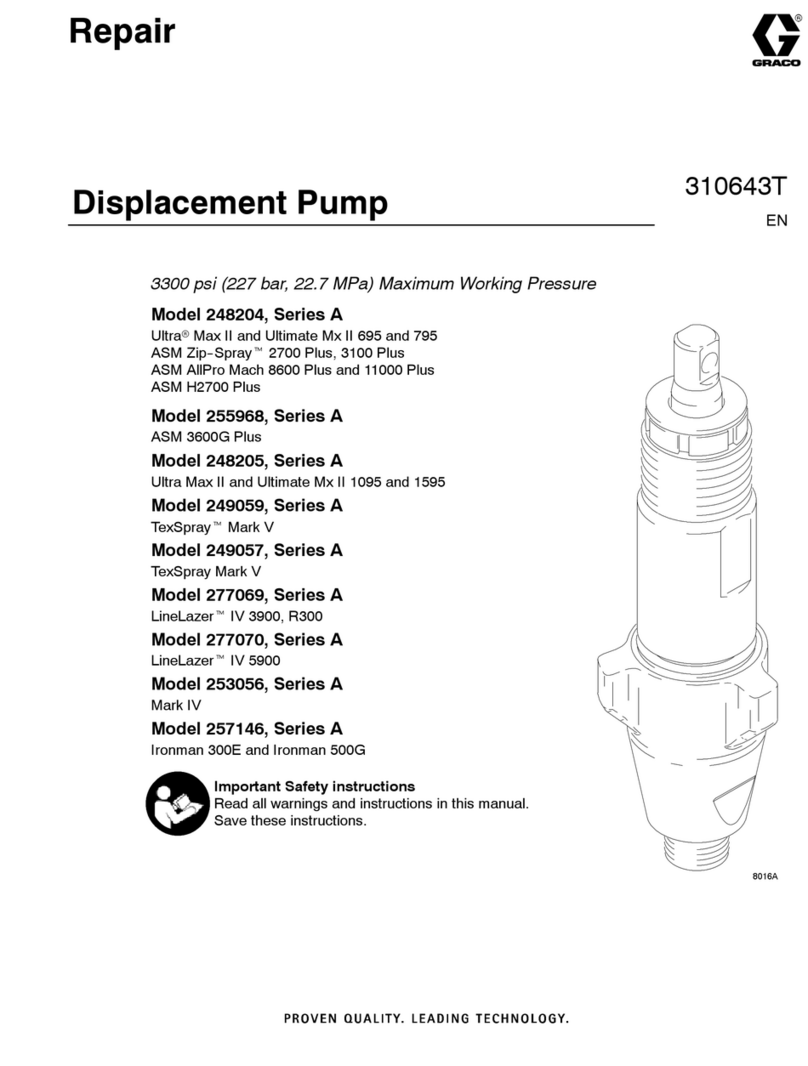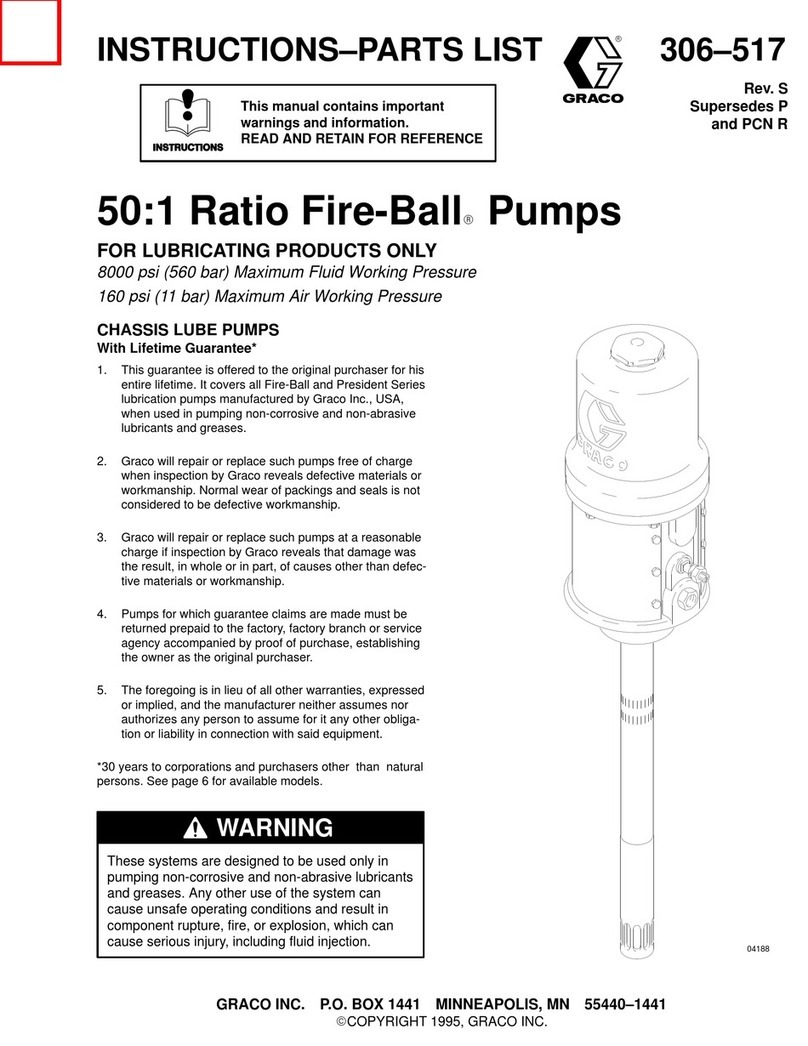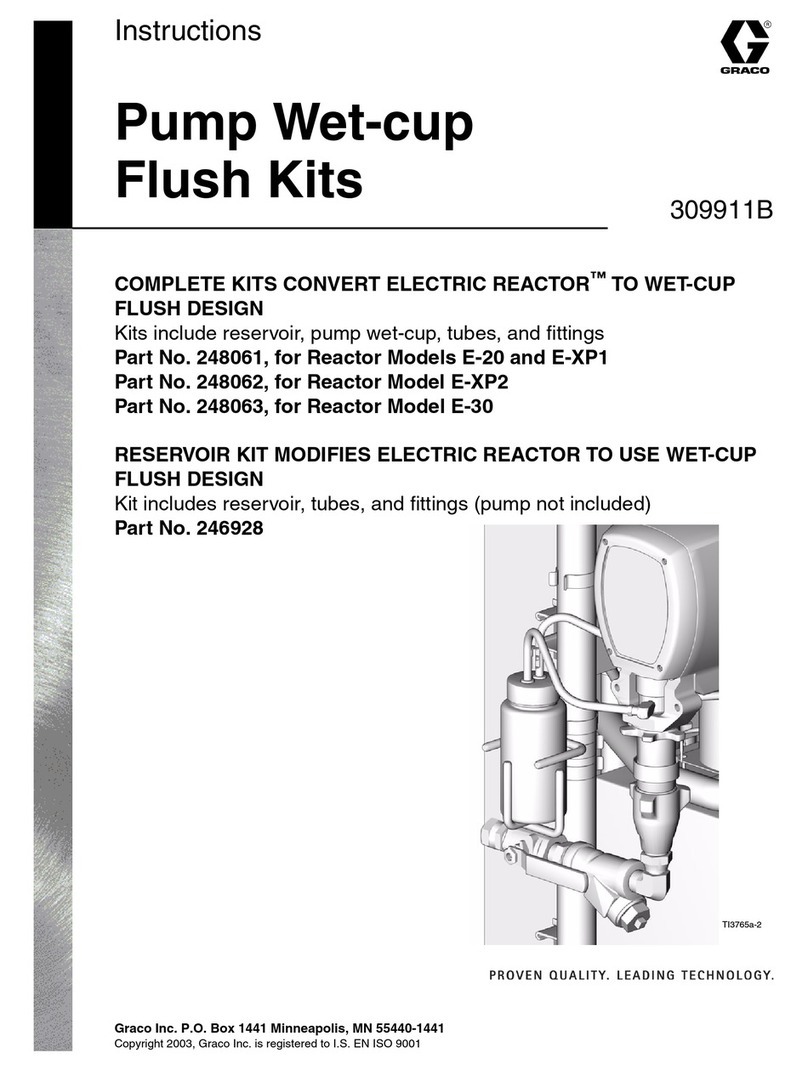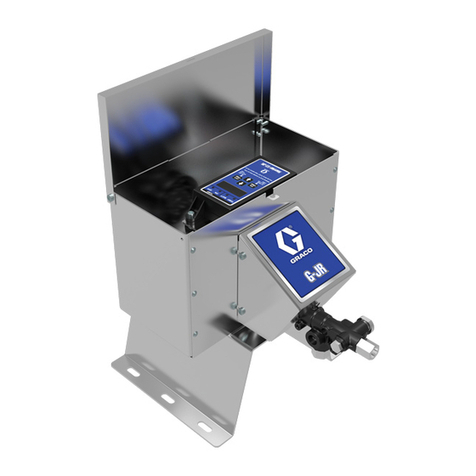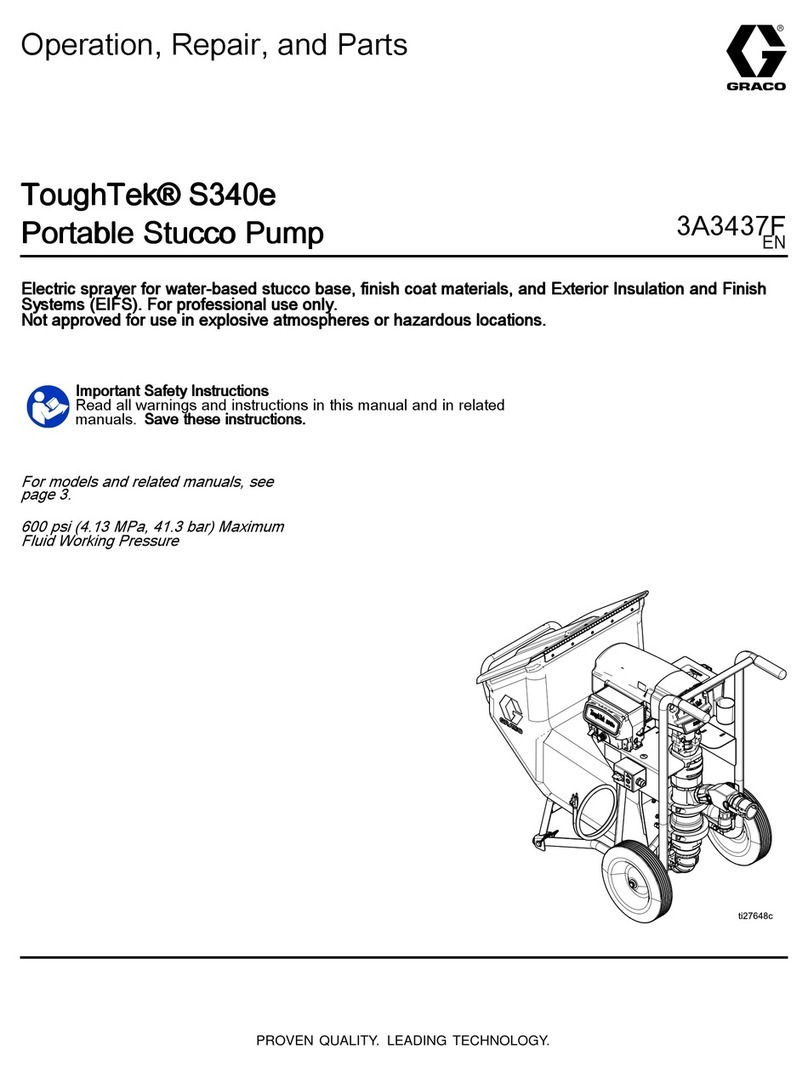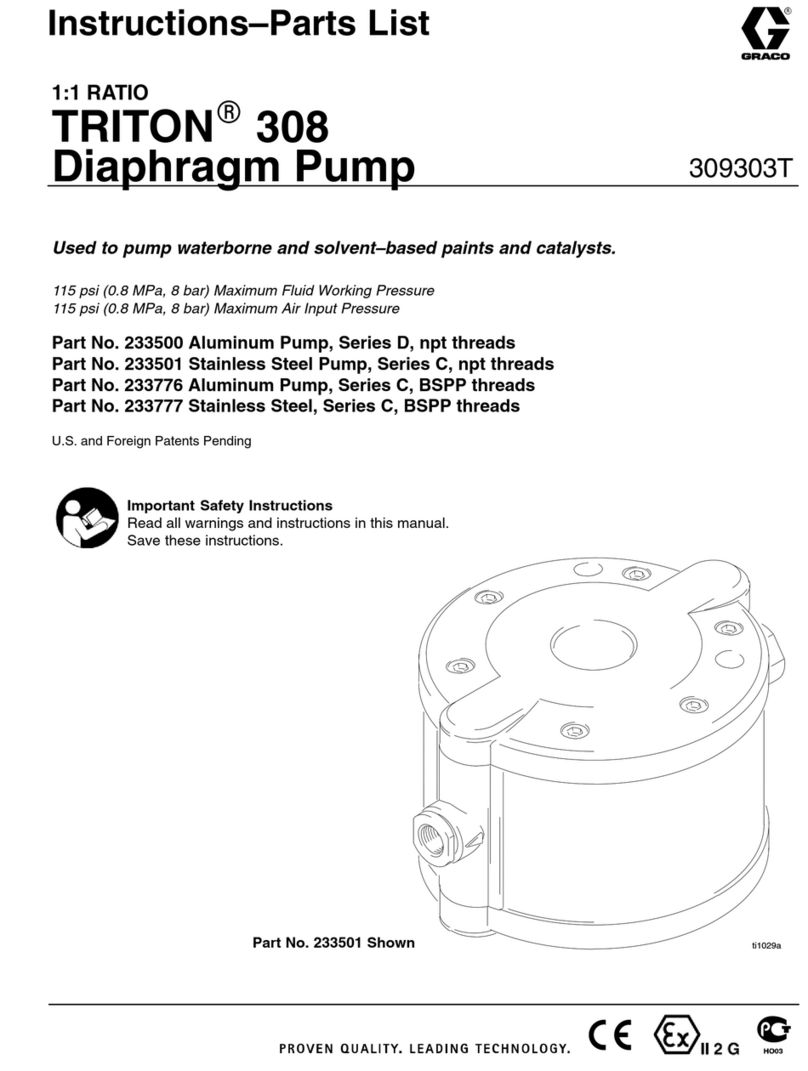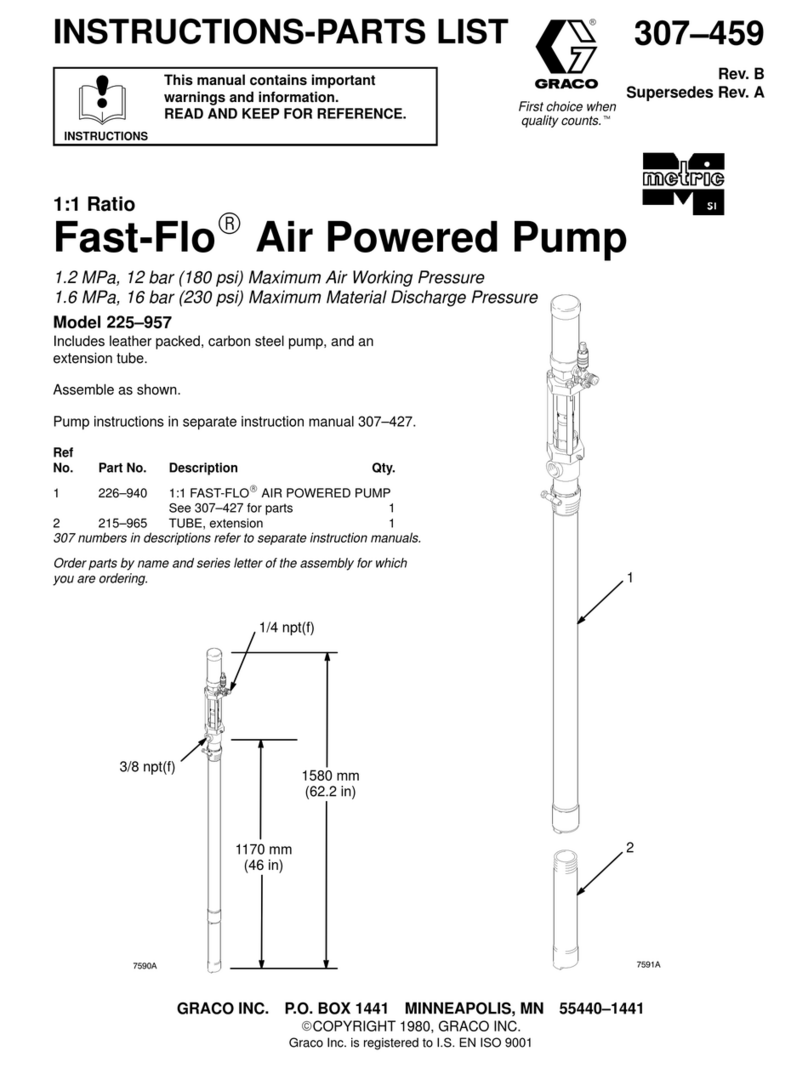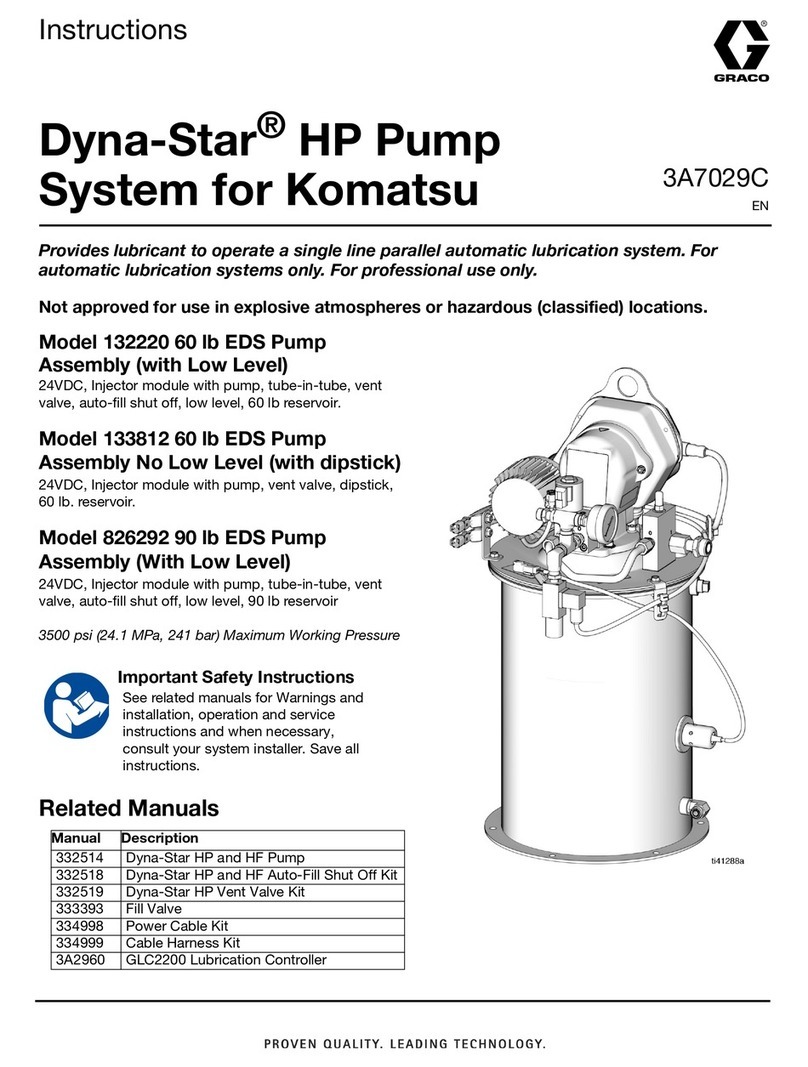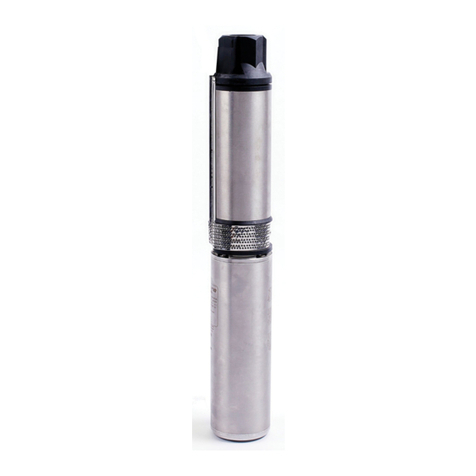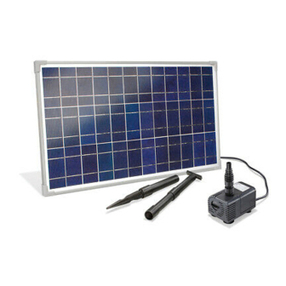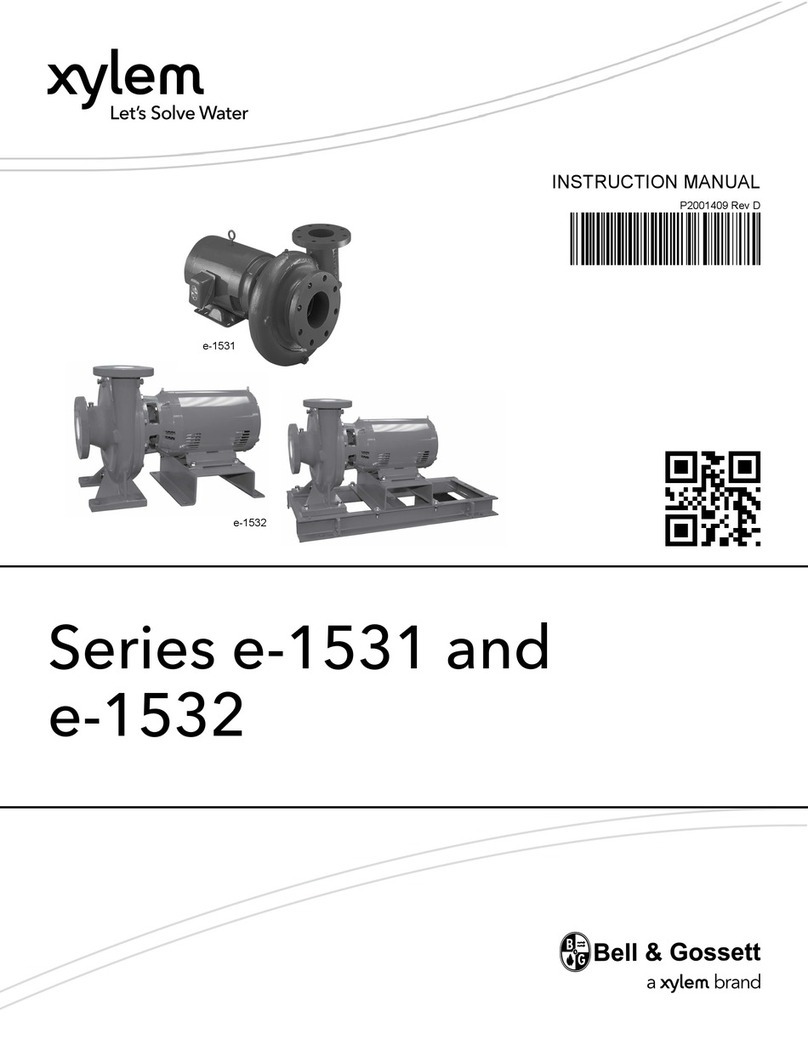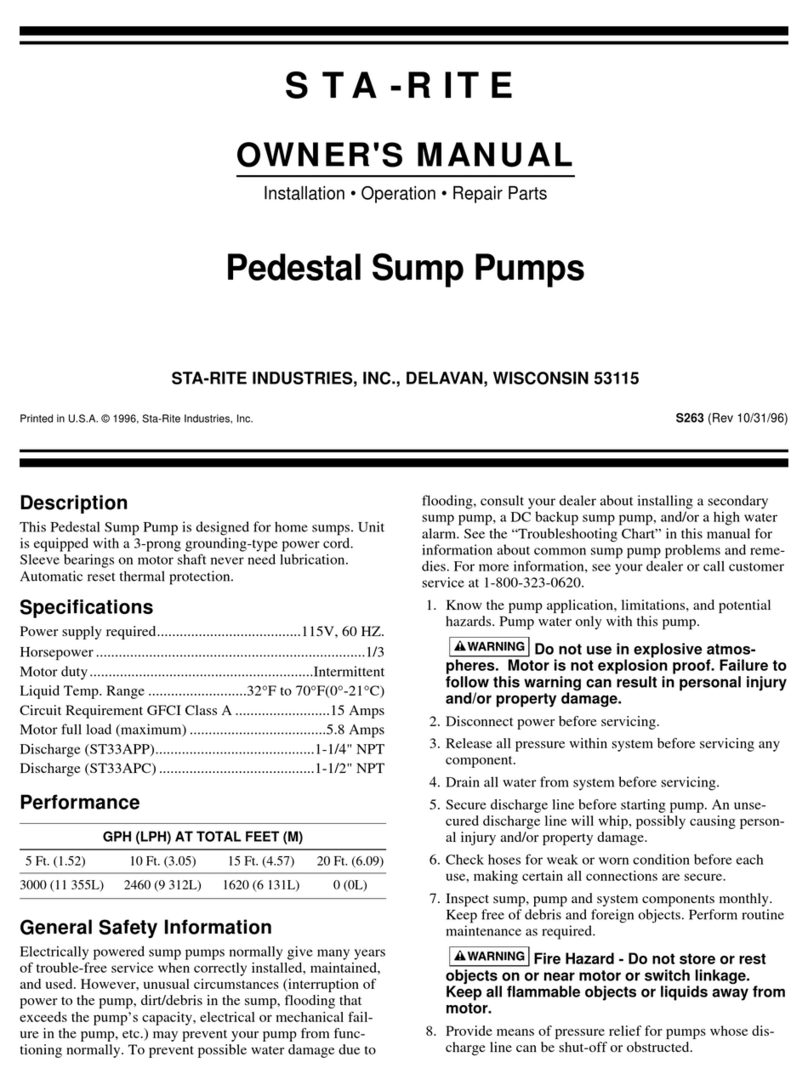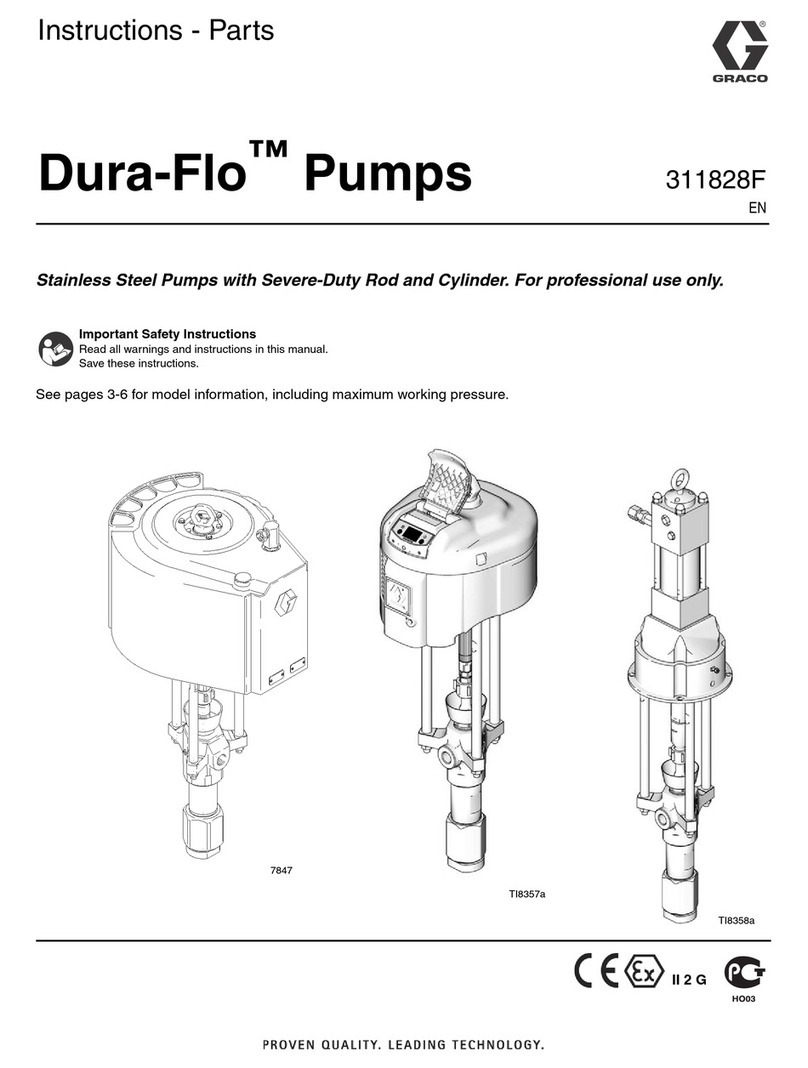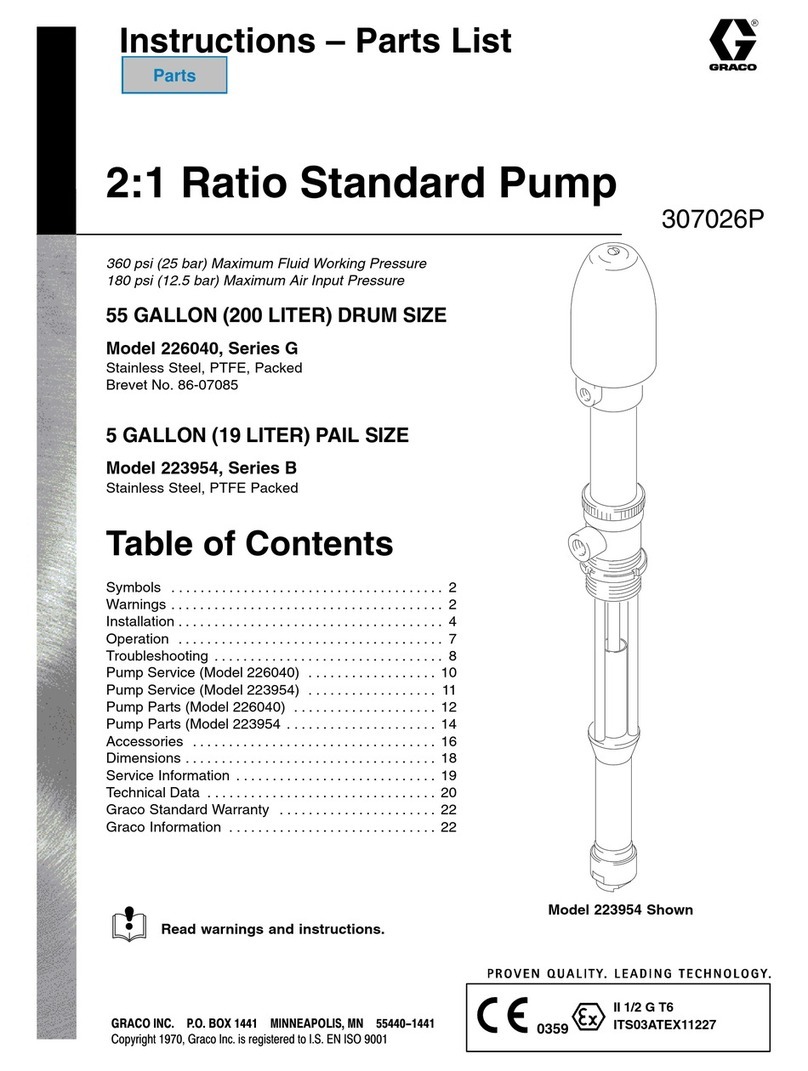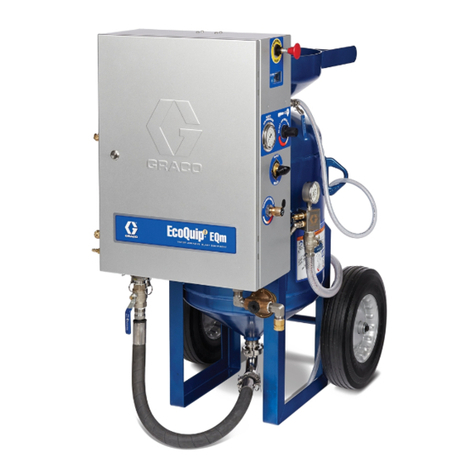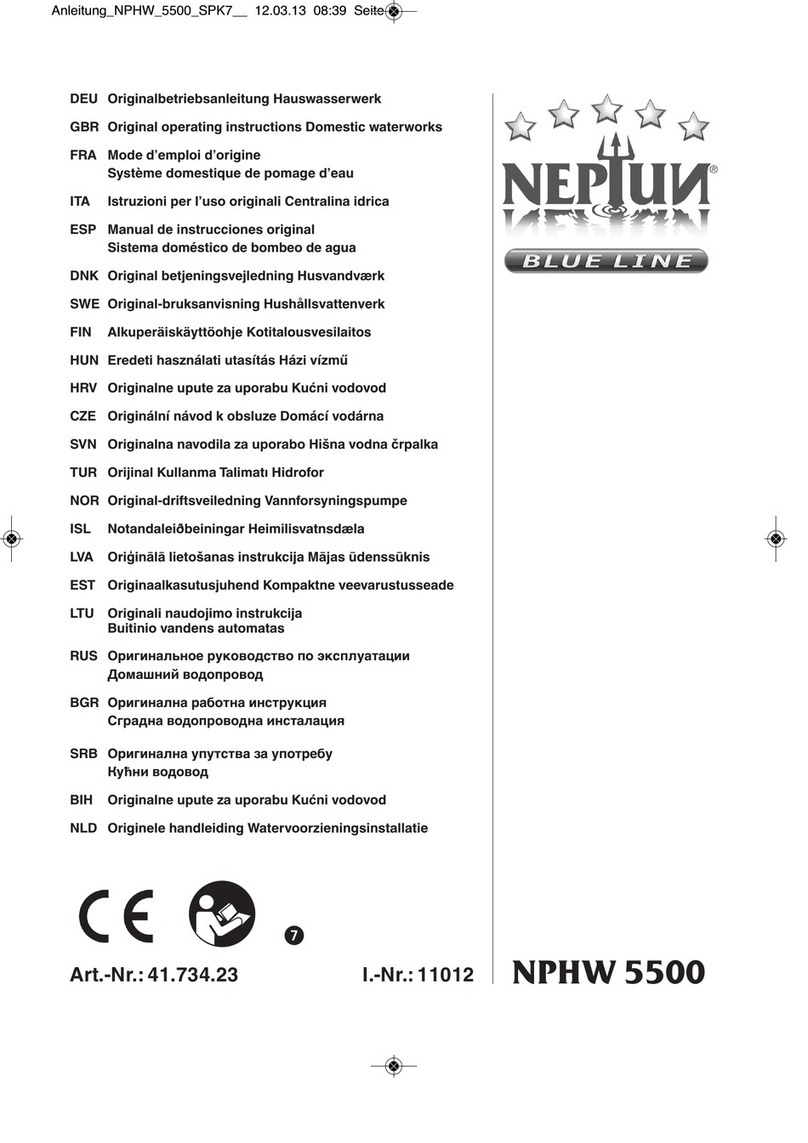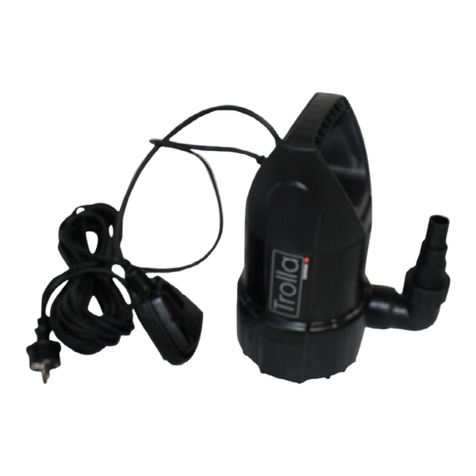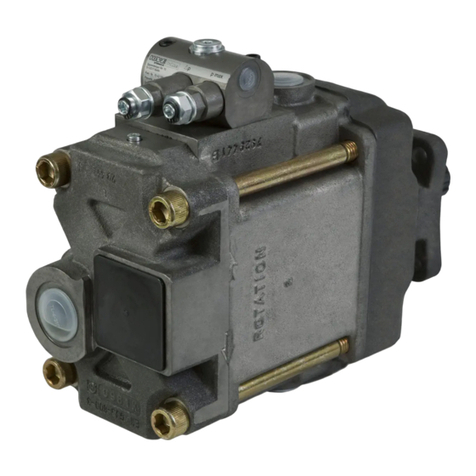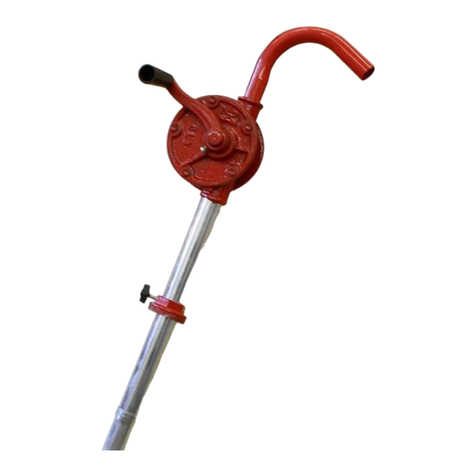
6306818
Operation
Pressure Relief Procedure
PRESSURIZED EQUIPMENT HAZARD
The system pressure must be manually relieved to
prevent the system from starting or spraying acci-
dentally. To reduce the risk of an injury from acci-
dental spray from the gun, splashing fluid, or mov-
ing parts, follow the Pressure Relief Procedure
whenever you:
Dare instructed to relieve the pressure,
Dstop spraying,
Dcheck or service any of the system equipment,
Dor install or clean the spray nozzle.
WARNING
1. Close the pump air regulator.
2. Close the bleed-type master air valve (required in
your system).
3. Hold a metal part of the gun firmly to a grounded
metal waste container and trigger the gun to
relieve fluid pressure.
4. Open the pump drain valve (required in your
system), having a container ready to catch the
drainage.
If you suspect that the spray tip or hose is completely
clogged, or that pressure has not been fully relieved
after following the steps above, very slowly loosen the
tip guard retaining nut or hose end coupling and relieve
pressure gradually, then loosen completely. Now clear
the tip or hose.
Using the Pump
WARNING
To reduce the risk of serious injury whenever you
are instructed to relieve pressure, always follow the
Pressure Relief Procedure at left.
WARNING
To reduce the risk of serious injury, including fluid
injection and splashing in the eyes or on the skin,
and property damage, never exceed the maximum
air and fluid working pressure of the lowest rated
component in your system.
The pump was tested in oil, and some oil was left in
the pump. If the oil will contaminate the fluid you are
pumping, flush it out.
Fill the packing nut/wet cup 1/2 full with Graco Throat
Seal Liquid or a compatible solvent. Keep the cup filled
at all times to help prevent the fluid you are pumping
from drying on the displacement rod and damaging the
throat packings.
To start the pump, turn on the main air supply. Open
the bleed-type master air valve (A). Trigger the spray
gun into a grounded metal pail, holding the gun firmly
to the pail. Slowly open the air regulator until the pump
is running smoothly (about 40 psi [280 kPa, 2.8 bar]).
Operate the pump until all air is purged from the sys-
tem. Release the gun trigger and lock the trigger
safety.
Use the air regulator (F) to control fluid pressure and
pump speed. Always use the lowest possible pressure
and cycle rate to achieve the desired results. Higher
pressures cause premature pump wear and gun wear,
and usually do not improve the spray pattern.
In a direct supply system, with adequate air pressure
supplied to the motor, the pump starts when the gun or
dispensing valve is opened, and stalls against pres-
sure when it is closed. In a circulating system, the
pump will run continuously and speed up or slow down
as the system demands.
If the pump accelerates quickly or is running too fast,
stop it immediately. Check the fluid supply and refill it if
necessary. Prime the pump to remove all air from the
system, or flush the pump, relieve the pressure, but
leave the system filled with a compatible solvent.
NOTE: A pump runaway valve (D) installed on the air
line automatically shuts off the pump if it starts to run
too fast.
